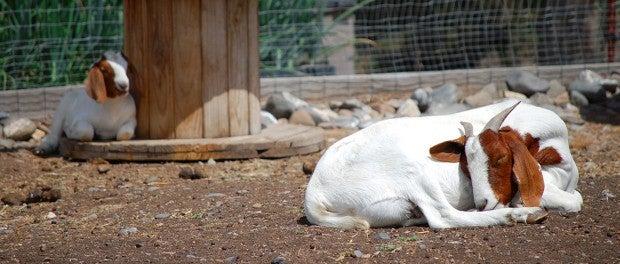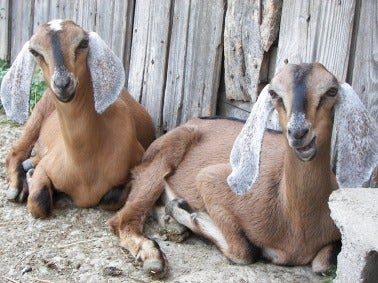Getting Started with Goats

When you start making plans for what you do and do not wish to include in your farming efforts, chances are both lists can become quite long. You may choose to avoid certain animals while embracing others. During this process of determining which is best for you, something that may come up is goats.
Goat farming has grown in popularity in recent years. As children develop allergies to cow’s milk, parents have turned to goat milk as a possible fix. At the same time, soaps and other personal hygiene products are also being made from goat milk due to its skin soothing capabilities. You can even purchase goats that produce fibers from which clothing can be made. On top of that, let’s not forget about delicious goat cheese. The meat of a goat isn’t too shabby either, all of which combined can make having goats quite an asset for a small farm.
Much like all other farm animals, there are things to consider before bringing home just any old goat. The main consideration is going to be breed with breed choice being based on what you intend to do with your goats. For example, dairy breeds include Alpine, La Mancha, Nigerian Dwarf, Nubian, Saanen, Sable, and Toggenburg. Breeds for meat production include Boer, Kiko, Spanish, and Tennessee. If you want to make a fashion statement by making and sporting goat gear, Angora and Cashmere breeds are the way to go. Although purebred, registered goats are ideal, mixed breeds are fine as well, and much less expensive. Just try to find a cross that best combines traits that will help you meet your goals.
Once you’ve settled on a breed, it is necessary to find a breeder with healthy stock. You want to look for goats in good flesh that are living in a clean environment and are tested CAE and CL free. After you’ve become confident in the breeder you’ve selected, you want to find a goat with a good personality. The goat that greets you at the fence and enjoys human interaction is often the best way to go as there may come a time when you have to perform unpleasant medical care on that animal, so you want it to be approachable. Goats that flee from human contact will likely continue to do so, which will make caring for them difficult in the long run. Also a good investment are goats that have been dis-budded and will not grow horns as these goats are less of a danger to not only themselves and one another, but also to you.
When you bring your new goats home, the first thing you are going to need to do is have a secure enclosure for your goat. A shelter and grassy area enclosed at ground level with tight wire mesh with smaller holes is usually best to prevent escapes from occurring. Next, it will be necessary to establish a food source. A goat is not a horse and it will not mow your lawn. Instead, goats will pick at and sample a little bit of everything. Goats should be provided regular feed that includes alfalfa hay and Bermuda/alfalfa grass pellets. Grain is only truly necessary for goats that need a distraction to get through the milking process. It should not be fed routinely as a part of a regular diet and that can actually backfire in the form of a constipated goat. Fresh water, of course, is a requirement at all times as is a mineral block for licking.
With your goat setup established and stocked with frolicking new additions, you will be free to watch and enjoy their antics. Goats can be hours of entertainment for the whole family, and at the end of the day can provide nourishment for us as well. If you’re looking for a farm investment that offers a lot of benefits in a small package, getting started with goats is the way to go.
To learn more about raising goats, please see our goat farming page at: https://www.beginningfarmers.org/goat-farming/






 Your Privacy Choices
Your Privacy Choices
Sounds really awesome! Would definitely be interested to work with goats.
My number is 410-533-4595
Yoella